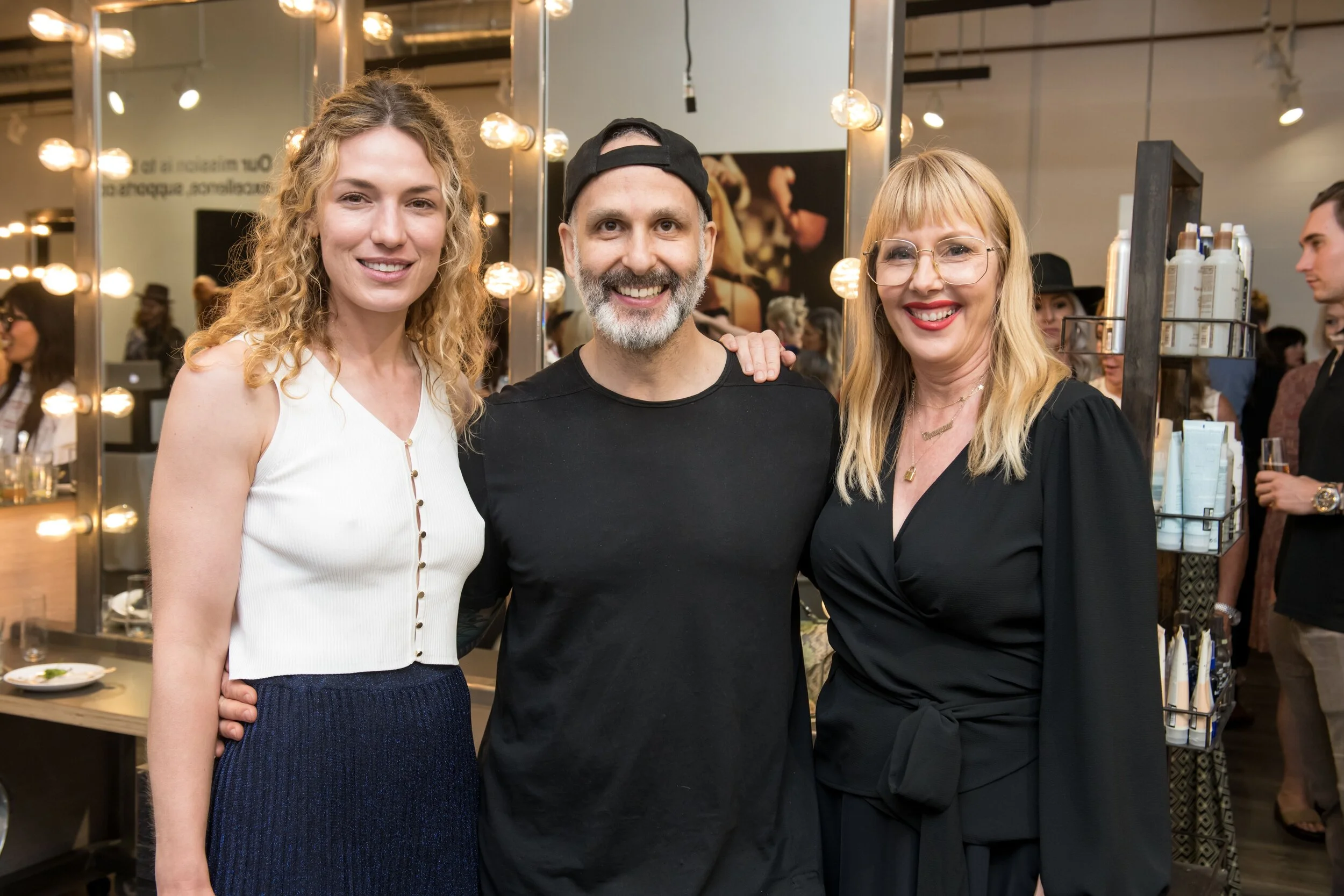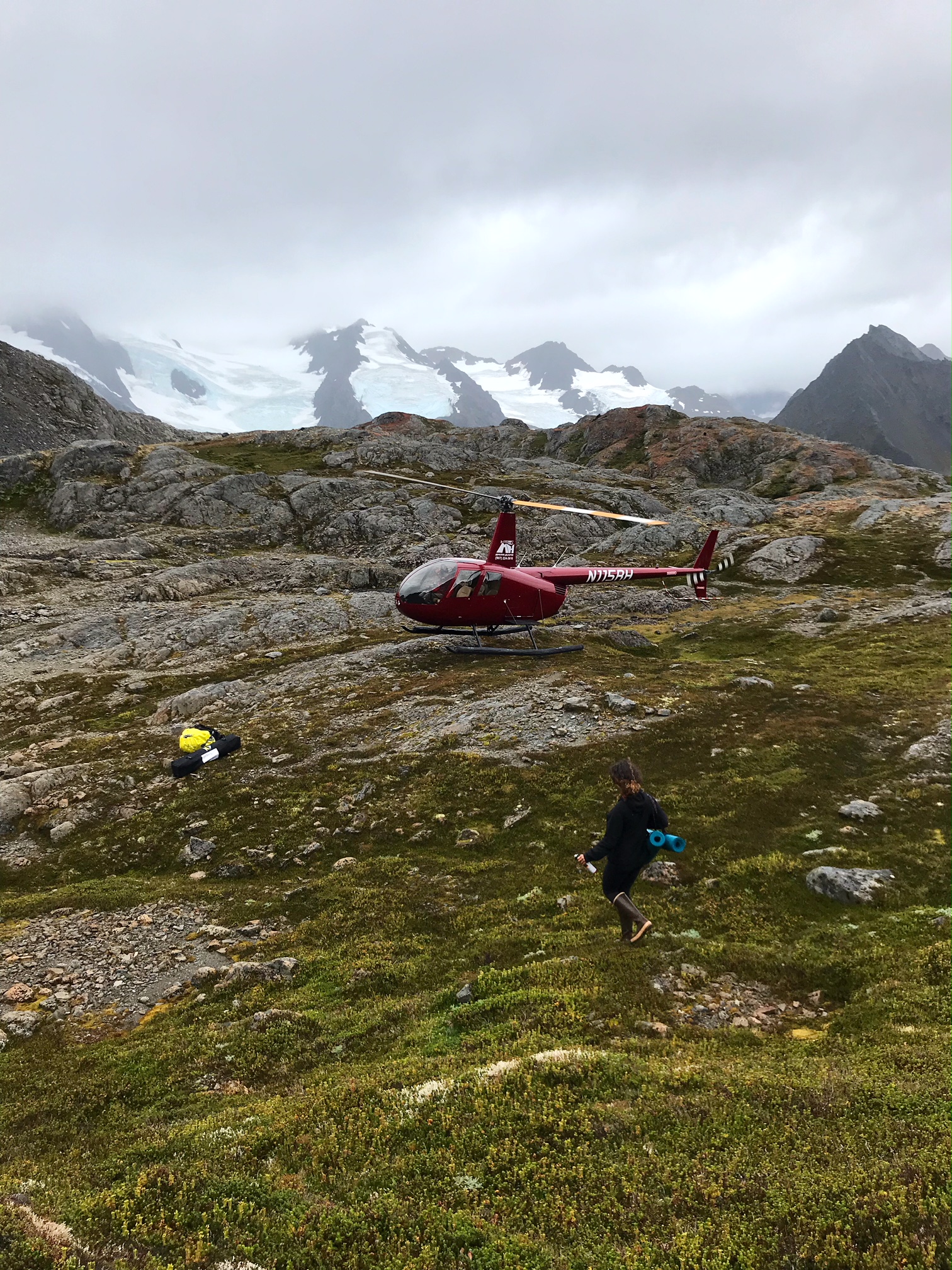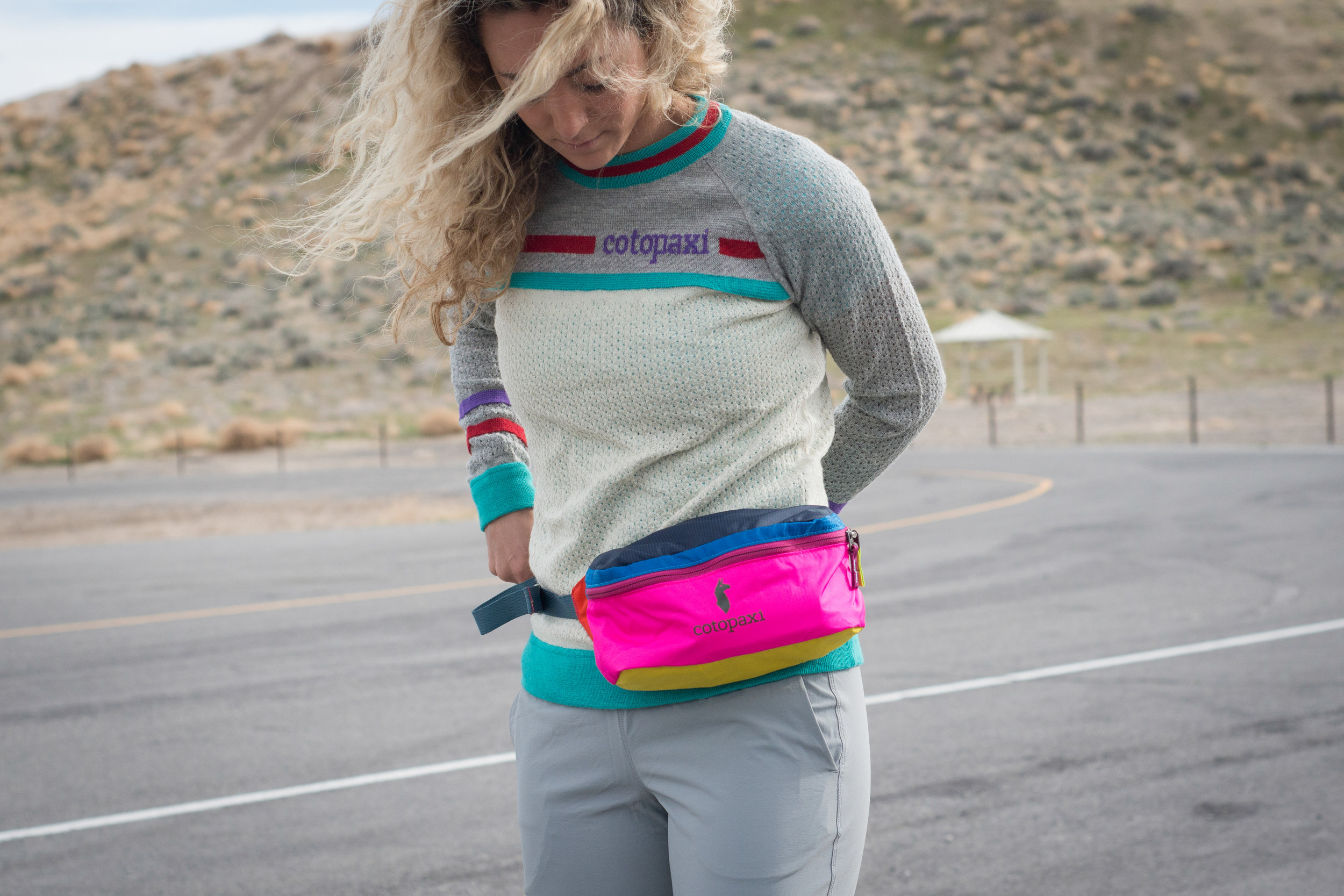Health Warrior is a seven-year-old, high-growth and plant-based superfood company based in Richmond, Virginia that might be best known for popularizing chia seeds in the consumer packaged goods (CPG) space. But they are best known in my kitchen as the makers of my new favorite travel meal: vegan mug muffins. The co-founders behind Health Warrior have done some major heavy lifting when it comes to popularizing sustainable, healthful superfood ingredients and getting them into snack foods. They see the future as plant-based and to see this mission-driven company grow as quickly as they have is so inspiring.
Cofounded by college roommates Shane Emmett and Dan Gluck, along with friend Nick Morris, after reading the Omnivore’s Dilemma and Born to Run and realizing how much the food industry was hurting consumers, they aimed to start a food company based on real nutrition. Shane and Dan's words, “When we started the company we realized that Americans were overfed and undernourished.” Just 12 months after launching nationally in Whole Foods Market, the brand’s signature chia-based became the top-selling bar across Whole Foods’ stores. Currently, Shane is CEO of Health Warrior, and Dan is Health Warrior's board director and managing partner at Power Plant Ventures. Here, these two co-founders discuss the plant-based and vegan movement today and where healthy foods are headed next.
Why did you go the plant-based direction and why do you think it’s important to the market today?
Shane: What we are doing is really celebrating the biodiversity of heroic superfoods and making them more convenient. In modern grocery stores, most of the food you are surrounded with is not good for you. Even food that is considered ‘better for you’ isn’t ‘good for you’. We wanted to make food that is 'good’ for you. Superfoods are just foods that are nutrient dense, and we felt we could use them in an accessible way to make people healthy.
Dan: Something that helps us and guides the thesis at Power Plant Ventures is that the food system is broken and that it is unhealthy and unsustainable and inhumane. We believe that plant-based foods are one of the best ways to solve this.
How is Health Warrior different from other vegan snack brands?
Shane: I didn’t know much about CPG going in, and I realized that most packaged food is unhealthy not to make it taste good but instead to make it cheap. We use an exceptionally low amount of sugar and always use superfoods as our first ingredient. It’s worth noting that some bars will promote chia as an ingredient, writing it really large on their packaging, but chia will be the last ingredient on the list meaning it’s the smallest amount of any ingredient in that product.
There are around 300,000 edible plant species - and just three of them make up almost 60% of our American calories: corn, rice and wheat. There are so many other nutrient-dense superfoods out there that don’t get used. We started with chia, but we’ve always intended to explore different hero ingredients from the plant world. We also look to aid in sustainability and thoughtful land use with our supply chain.
Dan: You also see companies who advertise ‘no sugar’ but use sugar alcohols or other synthetics to sweeten their products. There are a bunch of white papers coming out now that talk about how your body can’t digest these. Some of these sugar substitutes are like the new Olestra.
Superfoods and vegan foods are becoming household names with mainstream shoppers. Is this a trend and what is the next vanguard in this space?
Shane: Eighteen months after we launched nationally with Whole Foods, we launched in Target. We thought we would have to educate everyone on what chia seeds were. But now I look at our Amazon orders and you will see them all over the country, not just metropolitan areas. We think that fixing food will fix the problems in our healthcare system with people suffering from diabetes and obesity. If we can fix food, we can fix healthcare. It’s amazing to see the awareness of plant ingredients that we use like chia seed and pumpkin seeds. Our pumpkin seed bars went straight to Costco. The awareness happened really quickly - and not just in New York and Los Angeles.
Dan: Something that we talk a lot about at Health Warrior and Power Plant Ventures is that we are in the early innings of the food revolution. We are seeing buy-in from consumers and we’ve read statistics about how there is a 600% increase in consumers who identify as plant-based. Facebook just opened up an office in San Francisco whose office is totally plant-based. Corporates are also buying in. There was $42b in M&A deals in 2017: large strategic food acquisitions are focused on plant-based foods. Tyson just bought a big stake in Beyond Meat. And beyond the US, China last year sent new dietary guidelines to help cut meat consumption by 50%. Buy-in as far as plant-based and better-for-you is really happening and is so important in being able to effect change.
You are evolving the Health Warrior brand beyond bars - what is next and why are you moving in that direction?
Shane: We are in every Whole Foods in the country and are one of the top ranking bars on Amazon. The rise in direct-to-consumer sales in food has been really exciting. It’s given us the opportunity to innovate more quickly. We can try new things and see what our consumers love before taking something into retail. We have two new product lines: a superfood protein powder that is unique in that it is vegan and paleo, it’s sourced from pumpkin and chia and flax, with no added sugars or sweeteners. We heard a tremendous amount of noise about ‘couldn’t these protein powders have less ingredients and be less refined and have less artificial flavors’ and so we are doing it. The second one is a protein mug muffin launching at Wegman’s. It's a warm, spoonable muffin with two times the amount of protein as sugar. Mug muffins and mug cakes have become so popular on social media, so we thought we could make this and have it be a great source of fiber, have really little sugar, have so much protein with few ingredients. As far as what’s next, I read a book called The Third Plate and the author talks about how fine dining restaurants created the quinoa trend years ago. Fine dining is still doing a lot to show us new foods and food forms, and now, if you look there and listen carefully and see what people are doing in digital media, we can pay attention to what is happening now and next.
Due to this listening and watching, we lowered the sugar content of our chia food bars by 40% this year and I think this will be demanded by other brands, too. The microwavable mug came from this. The mug muffins we hope will tap a major trend in the industry right now: lots of products are being built for small meals. Not a full 500-600 calorie burrito type of item but a smaller meal that is more than a snack. It’s a major social media trend, and a great format for delivering real food and real nutrition and a way that Americans are starting to eat. For this and all of our new products, it must fit our guard rails: superfood as first ingredient, low sugar and no fake ingredients that you wouldn’t have in your pantry.
Who are the brands that you both are paying attention to now, who are creating exciting vegan products or have made a traditional vegan product more appealing to a broad audience?
Shane: There is a brand new one that just launched called A Dozen Cousinsthat is a gourmet, ready-to-eat bean company. This company has a really great story about making beans delicious and gourmet again. One we have been eating a lot is Beanfield’s chip company. Beans as a platform will be a really big one.
Dan: We are investors in Beyond Meat and they have created a healthier product that mimics the consistency and flavor of meat. What is really unique about Beyond Meat from a marketing perspective is that they asked retailers put their products in cold case next to meat. We didn’t want to be next to vegan brands. If you need any validation more than Beyond Burger now being on every TGI Fridays menu, I don’t know what you need.
What is next for the industry at large?
Dan: If you look at healthy food trade show Expo West as an example, 10 years ago it was made up of hardcore products. Now, the quality of the new brands that are joining is just transformative. Particularly as it applies to vegan eating. We’ve really seen the industry grow in terms of sophistication. In last Y Combinator class seven companies are in the innovative food sector. It’s encouraging to see some of the brightest minds out of Stanford and MIT go into this space instead of finance and traditional tech sectors.
Dan: Many larger brands don’t have resources to innovate or can’t do it with the speed that is necessary in the fast-paced market today. In the past couple of years, the strategics when looking to acquire - especially when a company is doing $50m or more - are now looking more downstream at companies who are doing $25m in sales. Earlier stage investors now have a much higher probability of exit earlier on. These large corporations are catching on to how quickly this industry is moving and how consumers are looking for mission-driven brands. Today, everyone wants to go to the ‘about’ section because people want to see the founder story and it has to be authentic. Large companies have a hard time making new products authentic. It’s really encouraging to see some of these large strategics embrace some of these brands - you see Chobani launching incubators and Nestle and Pepsi embracing working with smaller brands in concert.
In terms of sustainability, it’s becoming more known that eight times more land to produce one pound of protein for meat as plants, and four times as much water for the same. You also look at the majority of land in the US and global basis and the consumer is beginning to wake up to realize that to have a more sustainable food system there has to be more emphasis on plant-based diet.
Shane: this is intertwined with healthcare. The money is starting to follow the value of the food system changing. This industrialized, monoculture food system has only been around about 50 years. Like smoking, when something gets dangerous we begin to course-correct. We might see meat and sugar treated similarly to smoking in the near future. We see celebrities talking about the benefits of plant-based for the land and performance. James Cameron is now co-producing a movie called Game Changes about athletes and veganism, Serena Williams is talking about it for her performance. Maintaining the genuine whole food nutrition is really the key as we inevitably move to a plant-powered future.
What is next for you, at Health Warrior and at Power Plant Ventures?
Shane: In the bar category, there are no other bars with nationwide distribution who have a superfood as first ingredient. We eventually want to be able to transcend the retail shelf as Nike and Patagonia do. Movement is something of lifestyle, so we are working with emerging fitness and wellness brands as well as SoulCycle and Barry’s so we can really connect with our customer outside of traditional brick and mortar locations.
I wanted to stay that we would be running a plant-powered ad at the NFL. But in 10 years the women’s national team will be bigger and that is where we will be running ads. When you are starting a company and read about starting one, you have to work like a crazy lunatic for five to eight years and you can’t do anything else. At some point, I look forward to writing a book about the food industry.
Dan: We are investors in Thrive Market and they’ve let us know that plant-based is one of their highest searched terms. Power Plant will invest a billion dollars in plant-based food companies. I’m looking forward to an upcoming Spartan race with my three year old son.













